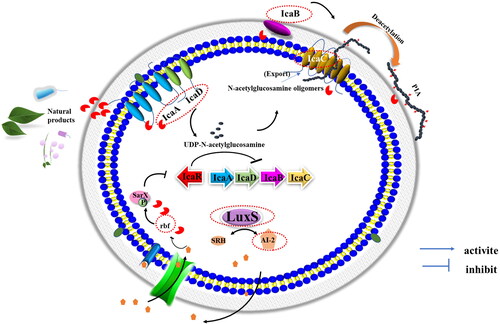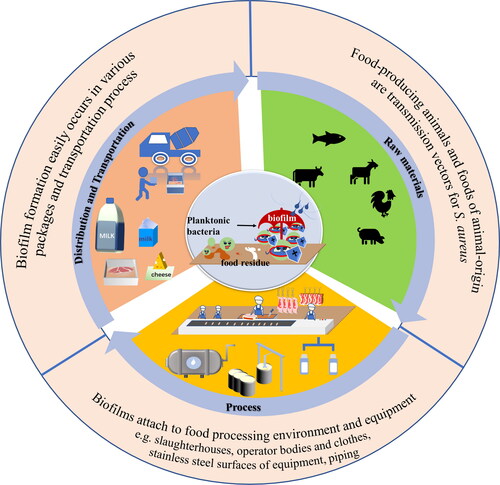Figures & data
Figure 2. Scheme of the network pathways governing biofilm formation and disruption in S. aureus. PIA, Polysaccharide intercellular adhesin; eDNA, Extracellular DNA; QS, Quorum sensing; LuxS, S-ribosylhomocysteine lyase; AI-2, Interspecies autoinducer; Agr, Accessory gene regulator protein locus; Spx, Global transcriptional regulator Spx; IcaR, Biofilm operon icaADBC HTH-type negative transcriptional regulator; SarA, Transcriptional regulator; SarR, HTH-type transcriptional regulator; σB, RNA polymerase sigma factor; PSMs, phenol-soluble modulins; CidA, Holin-like protein.
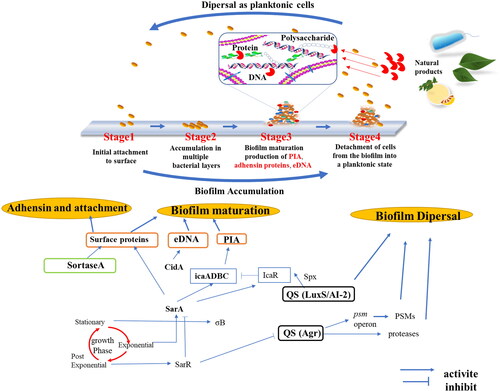
Table 1. Natural Products screening for inhibiting biofilm formation or removing pre-formed biofilm targeted adhesion proteins.
Figure 3. Mechanism of surface protein anchoring to the cell wall mediated by sortase A. Surface proteins precursors P1 with a C-terminal LPXTG motif are produced in the cytoplasm. SrtA is responsible for cleaving the amide bond between the threonine and glycine of the motif and catalyzing the formation of amide bond to form a Gly5 cross-bridge between the surface protein fragment and the peptidoglycan biosynthesis intermediate lipid II (Gao et al. Citation2016). Key molecule can be seen as antibiofilm and antibacterial targets, encircled in red. P1, P2, P3 represent Surface proteins precursors in different stages. MSCRAMMs: microbial surface components recognizing adhesive matrix molecule.
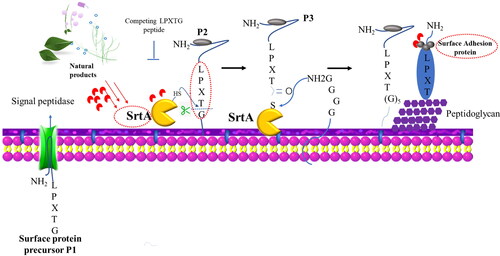
Table 2. Natural Products screening for inhibiting biofilm formation or removing pre-formed biofilm targeted EPS.
Figure 4. Mechanism of quorum sensing system (QS) Agr/AIP for biofilm regulation in S. aureus. The precursor of autoinducer peptide (AIP) is produced in the cytoplasm mediated by AgrD, Subsequently, AgrB is involved in the externalization of mature AIP. AgrC-AgrA two component system is activated at an AIP threshold concentration. Phosphorylated AgrA activates transcription of RNAII and RNAIII. The RNAIII inhibits biofilm by down- regulating adhesion surface proteins. AgrA increases transcription of the psmα and psmβ operons, encoding PSM peptides which improve biofilm dispersion. Key molecule can be seen as antibiofilm and antibacterial targets, encircled in red (Xie et al. Citation2019; Srivastava et al. Citation2014; Nicod et al. Citation2014).
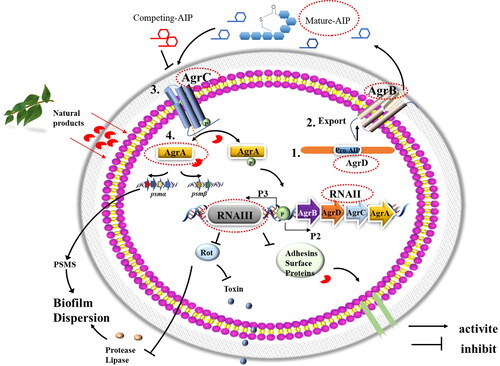
Table 3. Natural products screening for inhibiting biofilm formation or removing pre-formed biofilm targeted QS system.
Figure 5. Mechanism of quorum sensing system (QS) LuxS/AI-2 for biofilm regulation in S. aureus. Biosynthesis of Autoinducer 2 (AI-2) is catalyzed by LuxS and repressed the expression of rbf. Rbf could bind to the SarX and rbf promoters to upregulate their expression. Rbf can improves PIA-dependent biofilm formation via the repression of icaR expression. Polysaccharide intercellular adhesin (PIA) is synthesized regulated via proteins IcaA, IcaD, IcaB, and IcaC, encoded within the intercellular adhesin (ica) operon. IcaA and IcaD synergistically synthesize UDP-N-acetylglucosamine and exported via IcaC. Subsequently, IcaB regulates the partial deacetylation of PIA, improving adhesion via increased positive charge. Key molecule can be seen as antibiofilm and antibacterial targets, encircled in red.
